Features of the shakuhachi and playing it
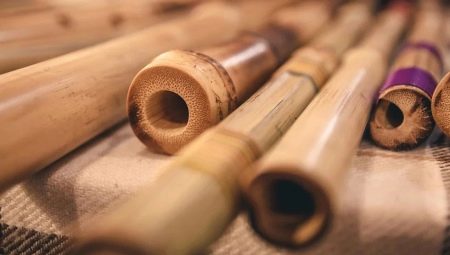
The legendary Japanese shakuhachi flute has been popular with musicians for over 1000 years. During this time, from an instrument that was used by monks during meditations, she managed to turn into one of the symbols of classical Japanese music and gain fame far beyond the borders of the land of the rising sun.
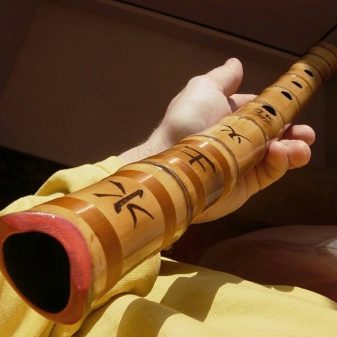
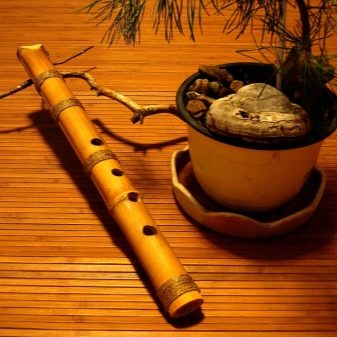
What it is?
The shakuhachi is a traditional Japanese musical instrument. Longitudinal the flute open type has a very simple device. A hollow instrument with two beveled edges is traditionally complemented by 5 finger holes. The standard flute length is 1.8 Japanese feet. The musical instrument got its name precisely because of its size. After all, "shaku" is translated from Japanese as a foot, and "hachi" - as eight.
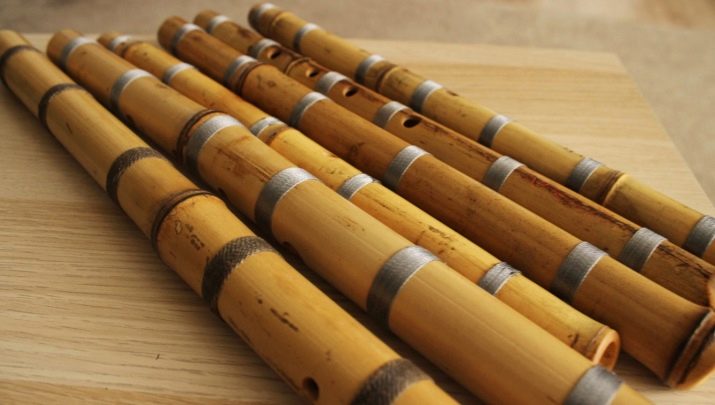
Shakuhachi masters are made only by hand. For its manufacture, a bamboo trunk is used along with root processes. It is thoroughly cleaned, warmed up over low heat and dried within a week. After that, it is stored in a dark and dry place for 3 to 5 years. The shelf life of the instrument determines how deep its sound will be.
When the base of the material is ready, the channel is cleaned and the necessary holes are drilled. The finished flute is covered with several layers of varnish. From the inside, it is processed so that the sound is clearer. Outside - to make the instrument look more beautiful.
Each flute is made by hand, so it turns out to be truly unique and unparalleled.
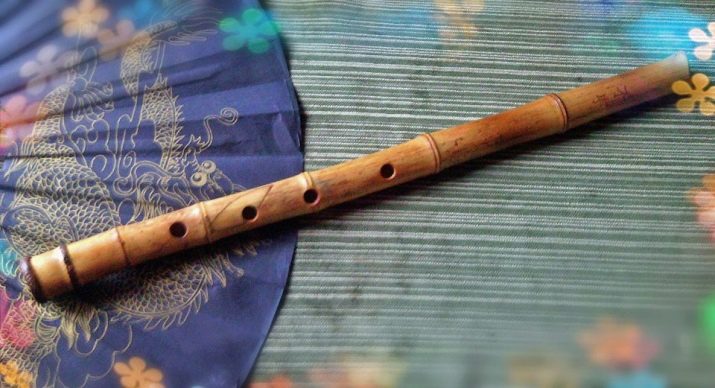
Short story
There are several versions of the appearance of the Japanese flute. According to one of them, this musical instrument appeared in Egypt. From there it came to India, then spread to China and Japan.For a long period, this musical instrument has been associated with wandering monks - the komuso. Playing such a bamboo flute replaced prayer and helped them focus on meditation.
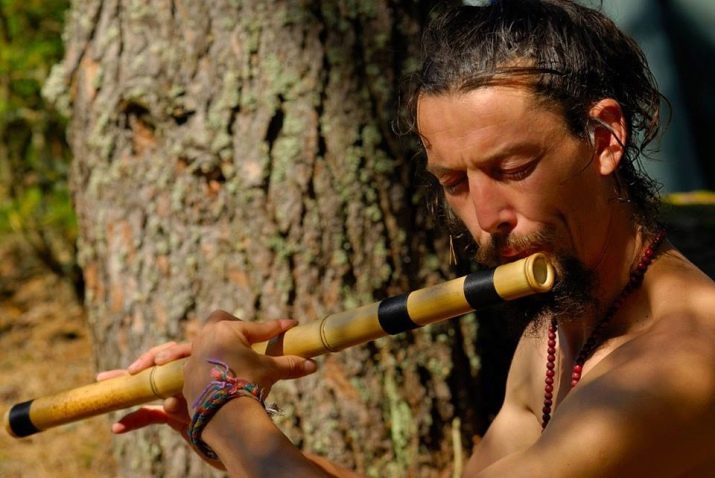
One of the legends says that because of the ban on carrying weapons, the monks used their own musical instruments for self-defense. That is why flutes began to be made from the root part of bamboo, which is the most durable and thickest. In the 17th century, the flute was used to perform folk songs. This instrument attracted peasants with its simplicity, so the flute very quickly managed to get the people's love.
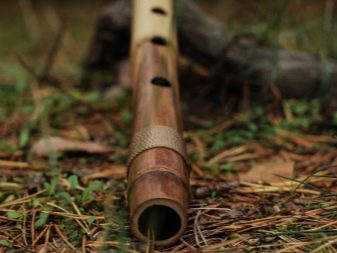
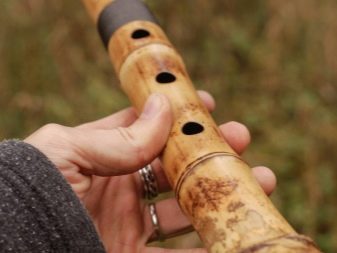
The most famous shakuhachi schools were founded in the 18th century.
- Meian-ryu. The school was founded around 1890, becoming the de facto successor of the Fuke school traditions. Its main difference was that the musicians played meditative melodies, consisting of long notes. Unfortunately, the school's original repertoire has been lost in the last century.
- Kinko-ryu... Initially, the school had aristocratic status. It was founded by Ronin Kinko in the second half of the 18th century. The traditional repertoire of the school consisted of compositions collected and processed by him. It was thanks to the Kinko school that the shakuhachi became part of the sankyoku, a traditional Japanese ensemble.
- Tozan-ryu... The school has been sympathetic to the Western musical style since its inception. Therefore, her main compositions are very different from what is typical for Japanese music. Most of the shakuhachi musicians now come from this school.
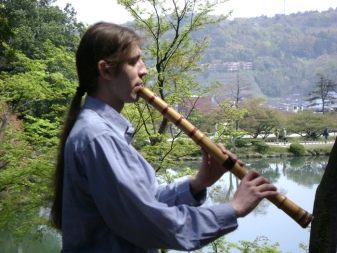
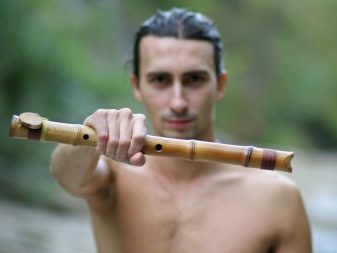
This musical instrument began to gain popularity outside of Japan only in the last century. Now the bamboo meditative flute is used in the performance of various musical compositions. The shakuhachi repertoire is divided into two large parts: gaikyoku and honkyoku.
The term honkyoku translates to true music. This word denotes traditional meditative compositions. All other tunes are called gaikyoku. This category includes both minyo (folk music) and something more modern, such as Japanese jazz.
Shakuhachi can be heard not only at concerts of academic or traditional Japanese music. For example, the melodies of the bamboo flute sound in the soundtracks of films such as "Batman" or "Jurassic Park".
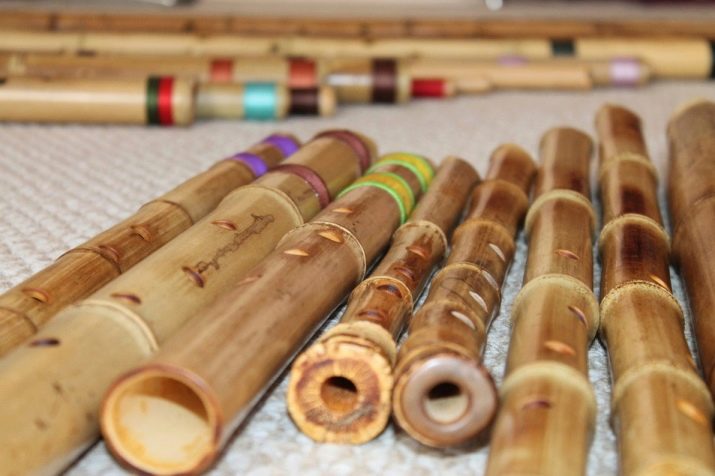
Species overview
There are several main types of shakuhachi.
- Hotiku... It is one of the oldest varieties of the Japanese flute. Its difference lies in the fact that they always try to make it from one single piece of bamboo. Often, even the partitions inside the bamboo are left intact. Many people think that because of this, the sound is higher quality and deeper.
- Gagaku... This type of flute has been popular in China for a long time. It got its name from the fact that it was used in the gakaku orchestra. Now you can see this musical instrument only in museums. The most valuable specimens are kept in the treasury in Nara.
- Tempuku... This flute has a slightly different mouth opening shape. The instrument is a cross between gagaku and fuke. Nowadays it is rarely used.
- Fuke... It features a wide and heavy end made from bamboo root. The design with 5 holes for playing was invented by the monks of the Fuke sect. This is what modern musicians use.
- Hitoyogiri... This is the very instrument that, unlike fuke, was used not for meditation, but for performing folk songs. Unfortunately, this flute went out of general use about a hundred years ago.
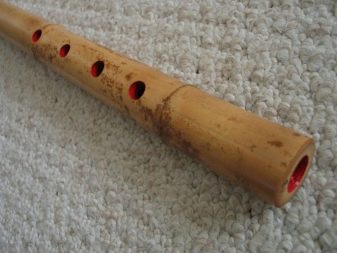
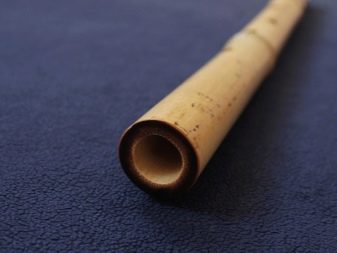
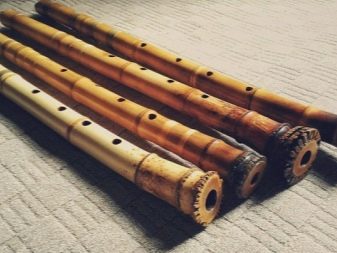
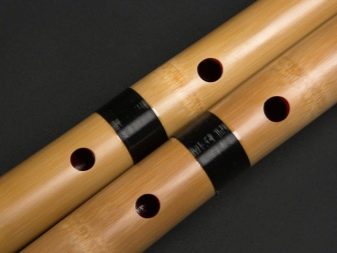
How to play?
Playing the shakuhachi is much like playing a regular flute. To extract the sound, you need to put the upper end of the musical instrument to the lower lip and direct the air flow to a wedge called utaguchi. While playing the shakuhachi, many musicians advise raising the corners of the mouth with a slight smile. At the same time, the lips should be relaxed.In this case, the sound will be clear, and not sibilant.
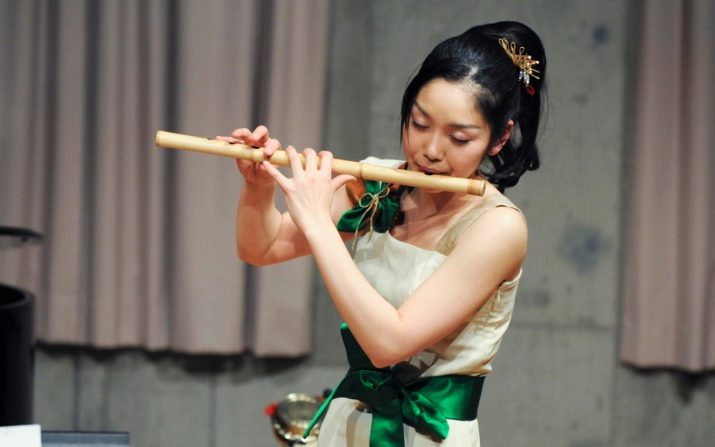
There are five finger holes on the surface of the tool. Using them, you can control the sound of the flute. The pitch is also affected by head up and down movements. Indeed, in this way the musician changes the angle at which the stream of air passes through the bamboo instrument.
Learning to play this musical instrument requires daily practice. It is advisable to practice in different conditions. For example, in nature, watching how the sound changes under the influence of the wind. It should be borne in mind that a beginner will not be able to play a single melody right away.
Taking the flute in hand for the first time will only create noise. It takes a lot of work to learn how to extract the sounds you want from an instrument.
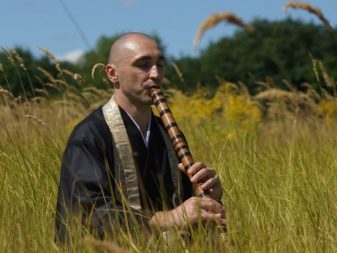
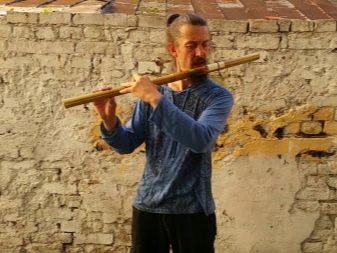
Separately, it should be noted that the shakuhachi needs proper care. The bamboo flute should be stored in a dry and warm room. Under no circumstances should it be kept near heaters or radiators. This will cause cracks to appear on the surface of the tool. Then it will have to be replaced with a new one or given for restoration. The shakuhachi does not need additional adjustment, but the inside of the shakuhachi should be thoroughly cleaned after each play.
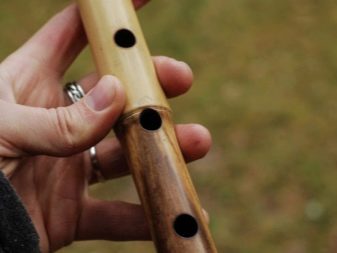
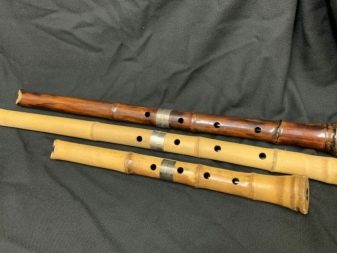
Playing the shakuhachi flute is a real art... Unfortunately, it takes too long to master it. After all, in order to learn to fully control this instrument and play full-fledged melodies on it, you have to practice for years. Therefore, now fewer and fewer people devote their lives to the development of ancient musical traditions.
For how to play the shakuhachi flute, see the next video.








